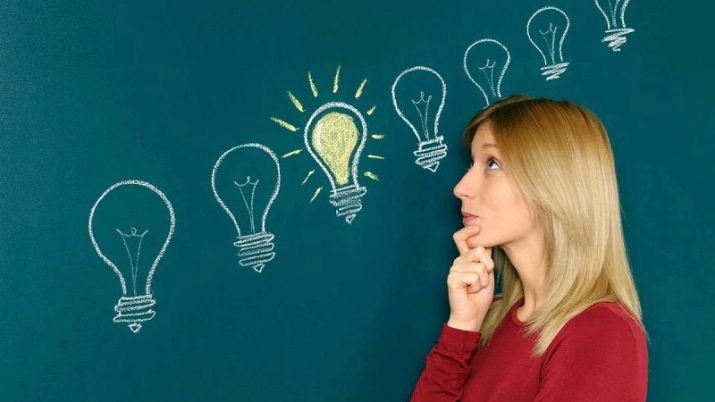Basic memorization techniques

It is quite possible to quickly and reliably capture educational and artistic texts, lectures, names, faces, phone numbers, and foreign words in your memory. For this purpose, they resort to using a variety of techniques.
Basic techniques
One way to master the art of memorization is to learn special techniques. They help a person to properly manage the storage in the brain structures of any data coming from the outside.
Effective memorization is based on vivid impressions, the desire to deliberately remember an event clearly, establishing a connection between new material and existing experience, skills of timely concentration of attention, awareness of memorized information and understanding where they will be used.

The technique of pictograms is aimed at teaching indirect memorization, which recommends converting words into pictures in order to effectively remember.
Testing your own photographic memory is possible using the Aivazovsky method. The great artist, if necessary, could transfer the landscape that remained in his memory to the canvas. The subject devotes several minutes to the study of an object, then closes his eyes and tries to reproduce it mentally.
Often people resort to cramming to keep a large amount of information in their head, but mechanical methods of memorizing are tedious and ineffective. For successful mastering of words, experts recommend the following techniques:
- rational techniques involve the use of logical thinking;
- eidetics is based on keeping interesting images in memory;
- the main mnemonic methods are based on artificial methods of effective memorization of information.
Mnemonics is aimed at developing imaginative thinking, creating supporting associative rows and increasing concentration of attention. It is used to capture difficult information. There are many interesting and effective memorization techniques.

Mnemonic
Most of the mnemonic tricks are reminiscent of children's games. All incoming information is encoded. This is followed by the learning process and repetition. The lexical base of any foreign language can be mastered in 2 weeks. Techniques are based on the creation of chains of individual associations associated with vivid images and certain emotions.
The sound of a foreign word is superimposed on a familiar concept. The English word "wall" (wall) is consonant with the Russian "ox", so you need to imagine a huge ox running quickly and resting its mighty horns against the wall. One can even imagine the violent crackling of a crumbling wall.
Acronym
Facts are easy to remember through conditional reduction of phrases, the initial letters of the words of which are the code for decoding the data necessary for memorization. Astronomers, by the initial letters of the words of certain phrases, easily assimilate the names of the planets of the solar system. From an early age, people, in order to reproduce the entire chain of rainbow colors in a strict sequence, memorize the expression "Every hunter wants to know where the pheasant is sitting."
Layout
This technique involves application of certain principles or rules. In the process of memorizing the text, some resort to to the arrangement of information in alphabetical order, others produce the distribution by color, size, age or purpose.

Associative method
For more effective memorization when creating associative rows, it is advisable to use the following mnemonic techniques: hyperbolization, revitalization, modification and accentuation.
- Hyperbolization implies deliberate exaggeration of images. A small object must be given a gigantic appearance in the imagination. He must appear in thoughts much larger than in the real world. For example, you need to imagine a huge fly. Perhaps it will have the characteristics of an eagle or even an airplane.
- Revitalization subject involves giving it movement. The table moving independently around the room will be remembered for a long time.
- Modification occurs when transforming a concept, but without violating the meaning of the word itself. For example, you can imagine a motorcycle equipped with a propeller.
- Accentuation based on the mental enhancement of the image by highlighting an important detail. You can use a caricature or cartoon. Sometimes light or sound gives a memorable image. For example, during memorization, the word “scarf” is presented as buzzing and glowing from within.
You can use the "chain" technique and connect words that are not logically related to each other. For example, a chain of images is created to memorize a shopping list.
The funnier and more absurd the story turns out, the better it will remain in the head.


Memorization system "Giordano"
For long-term preservation in memory of various numbers, phone numbers, addresses, exact dates, toponymic names, surnames, names, patronymics, the Giordano system is recognized as one of the most effective techniques. The main stages include the coding of details of the memorized material into visual images, the very process of sequential memorization of information and its consolidation in memory.
Visual coding is not memorization itself. This is just preparation for it. For example, you urgently need to fix the phone number 8-914-240-53-03 in the memory. It can be encoded as follows. Eight is an hourglass, which reflects the episode associated with the outbreak of the First World War.
The next 3 numbers are memorized, visually representing a hedgehog with two needles sticking out in different directions, to one of which a tea bag is attached, since the number "4" looks like the letter "Ch". An egg is visible on the other needle because it resembles zero in shape.
Sweat runs down the hedgehog. The first letter of the word is coded five, and the last - three. An ambulance car with a brightly written "03" is taking away a sick hedgehog.
First, the basis of the future association is identified. It is necessary to create 3 parts of its separate links, and then present it as a whole. It usually takes 5-6 seconds to form one bond. It is necessary to remember all the connections formed between the elements of information created in the imagination.
Memorizing the sequence of associations occurs in 2 ways. The first involves the creation of an associative array from the required number of stimulating images. The second method involves the formation of an information block using directly connected associations. The consolidation of the necessary material is carried out through its conscious elaboration in the imagination.
The information is reinforced by using the active repetition technique. Mentally reproduce in memory all events associated with memorizing a phone number.

The laws of memory in psychology
The law of vivid impressions affects memorization. Memory always reacts to strong impressions, so bright events are remembered quickly and easily. You can easily recall any very interesting episode that happened a long time ago. A person who stands out with extravagant clothes or extraordinary behavior remains in the memory for a long time. If you need to memorize some information, you need to give them brightness and originality.
The law of the significance of information distributes information according to its need. Everything that is necessary for survival, satisfaction of needs, does not cause any problems with memorization. Individual attachments, life values, hobbies, personal emotions and feelings are remembered without much effort.
The law of motivation operates in the presence of a motivating force, a great desire to master the material. An upcoming reward in a competition or competition provides strong motivation to learn many different facts and information. It is noticed that it is difficult for students to master exactly those subjects that, as they think, will not be useful to them in life.
The law of activity presupposes to perform some action before strengthening information in memory. It can be calculations, comparisons, isolating the main ideas. You can artificially get involved in the work on the information, work with it. Any actions taken will improve the learning process.
Studying the settings and settings before starting to master any material is mandatory. For the rational use of memory resources, one must prepare for its perception. It is recommended to skim through all the information to be studied.
The law of prior knowledge presupposes reliance on accumulated experience. Connecting with familiar material makes it easier to absorb new information. It is necessary to draw parallels, analysis and systematization of facts.
The law of mutual influence of traces of memory provides for the organization of work on memorization with alternating thought processes and short pauses, during which the data is fixed in the brain structures.

Other techniques
Many techniques are capable of increasing the efficiency of mastering educational material. It is important to analyze the effectiveness of each technique used and subsequently use the most appropriate memorization techniques.
For quick recall of prepared speech, use edge effect, which helps to reproduce the beginning and end of a long phrase. Locating method assumes to bind to the subjects encountered daily on the way to study or work, necessary to memorize concepts.You can get directions around your apartment or room.
The OVD method includes 4 main stages of memorizing the material: highlighting the main idea, carefully reading, reviewing and fine-tuning. First, it is assumed that there is a meaningful reading of the necessary data, accompanied by the search for the main idea, which is written down on a piece of paper. At the next stage, they carefully read the entire speech again, focusing attention on the smallest details and details that need to be tied to the main thoughts of the text.
This is followed by an overview of the entire speech and drawing up a rough plan in order to understand the sequence of the necessary facts. Refinement involves repeating the text from memory. First, the main points are reproduced, then the details are mentally reconstructed. After that, it is recommended to read the plan again and mark the missing data.

Some experts suggest rational methods for learning foreign vocabulary or difficult terms in a dream. The technology of the technique provides for the use of the first hour after falling asleep and the last half hour before waking up. First, they read the words and listen to them in an audio recording, then a loud repetition of vocabulary is made after the announcer, accompanied by soothing music. After 15 minutes, the student should go to bed. In an audio recording, words are repeated three times, first in a loud voice, then it becomes quieter and quieter. In the morning, the vocabulary is read again with a growing sound.
Gold List Method provides for bi-weekly intervals and repetitions of recordings. First, a bronze list of 25 words recorded in a notebook is prepared. After 2 weeks, the learned words are excluded from the list, 17 words are written down and again they are forgotten. List 3 will include 12 words, 4 times will write about 8 words. The gold list is formed by rewriting forgotten words from the silver list. The work is carried out according to the same scheme.
There are special techniques designed to capture faces, names, patronymics and surnames in the head. The best of them solve the problem of attaching a person to a name, profession, hobbies, habits by building associative links. You can create an image based on typical associations associated with literary or fairy-tale characters.
Sometimes they refer to the etymological meaning of the name and the figurative representation occurs on its basis. With the help of mnemonics, portraits of scientists, philosophers, and writers are easily memorized.

Recommendations
Pupils and students are encouraged to use all the available thinking potential. It is advisable not to use cheat sheets and use the Internet as little as possible to find the necessary educational material. We must strive to recreate the necessary information on our own, relying on our own memory.
Any new information should be retelling in your own words, while it is desirable to link it with previously acquired knowledge, draw parallels between them and associate with events from personal experience.
To comprehend voluminous information, it is advised alternation technique... First, they partially complete tasks in one subject, then switch to another discipline, returning one by one to the previous material.
In order to avoid a chaotic pile-up of events, all facts and information should be clearly structured.









